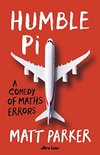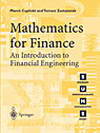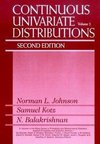
-
 Anglický jazyk
Anglický jazyk
Individual-Based Models and Their Limits
Autor: Rados¿aw Wieczorek
Individual-based models (IBM) describe a population as a collection of different organisms whose local interactions determine the behaviour of the entire population. The individual description is convenient for computer simulations and the determination... Viac o knihe
Na objednávku
49.49 €
bežná cena: 54.99 €
O knihe
Individual-based models (IBM) describe a population as a collection of different organisms whose local interactions determine the behaviour of the entire population. The individual description is convenient for computer simulations and the determination of various model parameters, and appropriate limit passages lead to the transport equations used in classical population dynamics models. The aim of this book is to provide a brief mathematical introduction to IBMs and their application to selected biological topics. The book is divided into seven chapters. In the first chapter we give a general description of IBMs and we present examples of models to illustrate their possible applications. Examples of applications include age, size and phenotype models, coagulation-fragmentation process, and models of genome evolution. The second chapter contains some theoretical results concerning limit passages from IBMs to phenotype and age-structured models. The rate of this convergence formulated as functional central limit theorems is presented in Chapter 3. As a result of the limit passage can be a superprocess, i.e., a stochastic process with values in a space of measures. Chapter 4 presented examples of such passages: from the branching Brownian motion to the Dawson--Watanabe superprocess and from the Moran's model of genetic drift with mutations to the Fleming--Viot superprocess. The next three chapters are devoted to models, in which we directly participated in the study. In Chapter 5 we study IBMs phenotype models and their limit passages. We show that random mating stabilises the distribution of traits, while assortative mating can lead to a polymorphic population. Formation of aggregates of phytoplankton and their movement is studied in Chapter 6. We present two types of models based on: fragmentation-coagulation processes; and diffusion with chemical signals leading to advanced superprocesses. Chapter 7 is devoted to rather advanced models with chemotaxis used to description of retinal angiogenesis and cell proliferations. The book is complemented by two appendices in which we have collected information about stochastic processes and various spaces we have used. The book is dedicated both to mathematicians and biologists. The first group will find here new biological models which leads to interesting and often new mathematical questions. Biologists can observe how to include seemingly different biological processes into a unified mathematical theory and deduce from this theory interesting biological conclusions. Apart from the sections on superprocesses, where quite advanced mathematical issues arise, such as stochastic partial equations, we try to keep the required mathematical and biological background to a minimum so that the topics are accessible to students.
- Vydavateľstvo: Springer International Publishing
- Rok vydania: 2024
- Formát: Paperback
- Rozmer: 235 x 155 mm
- Jazyk: Anglický jazyk
- ISBN: 9783031752698












